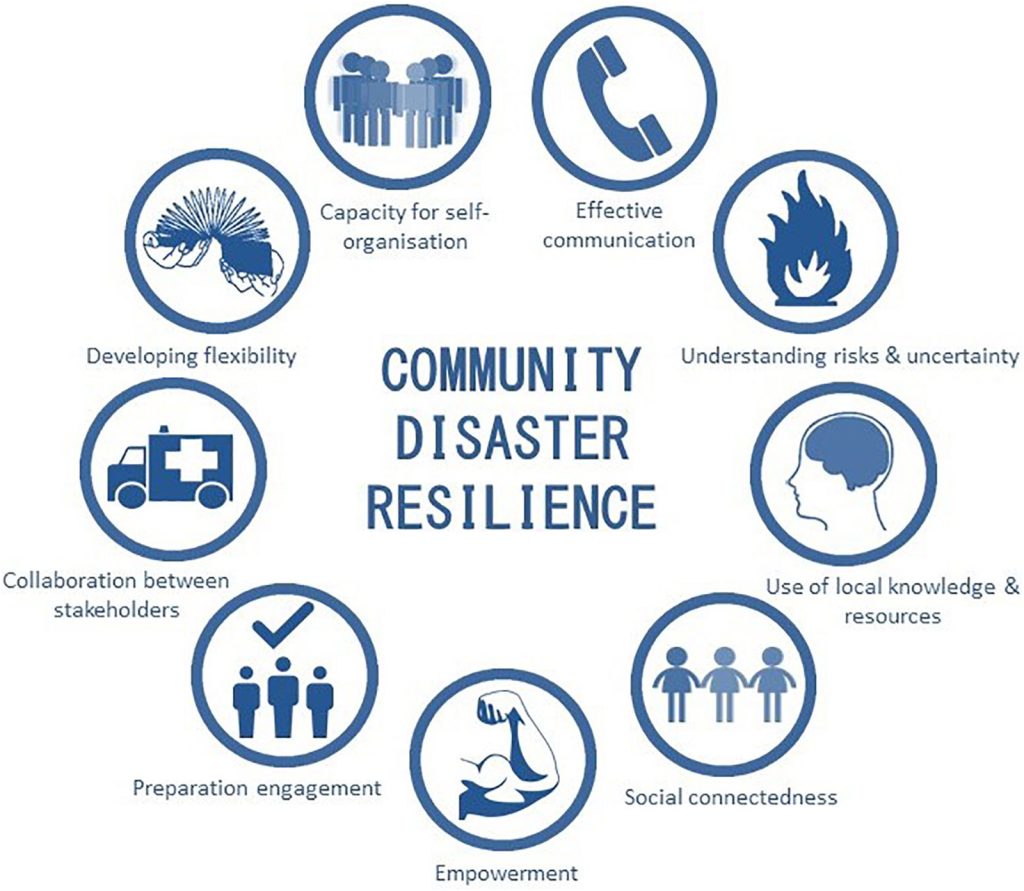10. What is the role of clinics in the emerging area of climate resilience and preparedness?
By 2050 we will live in a world that is at least 1.5 degrees warmer,[1] a reality that will bring increasing extreme weather events and will change exponentially the way all of us exist and function.
As a student (and future legal practitioner) the ability to prepare for and bounce back from climate-induced extreme weather professionally, from within the legal system, and on a personal level, living with and through the impacts of changing climatic conditions, will be crucial. A level of resilience and preparedness is required.[2] Just as the clinical setting provides opportunities to support wellness, it also offers a unique opportunity to develop climate resilience and preparedness, personally and professionally.
Resilience and preparedness, particularly in a climate context, are relatively new and emerging areas of work both within the CLC and CLE settings. As noted, new clinic subject matter or approaches emerge to meet new situations and challenges. In Australia, the CLC sector is already responding to increased community need following extreme weather events by providing legal help, as well as working alongside communities to support resilience and preparedness.[3]
Many intersecting or adjacent bodies of ‘resilience’ literature exist, including socio-ecological resilience,[4] and social capital building to improve and promote ‘community resilience’.[5] ‘Resilience’ as a concept is used differently across professions, sectors and academic fields. However, the Intergovernmental Panel on Climate Change (‘IPCC’) describes resilience in a climate change context as ‘the capacity of social, economic and ecosystems to cope with a hazardous event or trend or disturbance responding or reorganising in ways that maintain their essential function, identity and structure … while also maintaining the capacity for adaptation, learning and transformation’.[6] The concept of community disaster resilience is visualised in the work of Haworth et al.

What ‘preparedness’ (including climate or legal preparedness) looks like will vary across professional contexts and sectors and is applied variously to individuals and communities at structural, international, country, state and local levels. Recognition and responses to calls to support community climate resilience and preparedness are evolving and developing. In its 2023 report, the Australian Pro Bono Centre observed a need for ‘a focus on preparedness work, including advocacy, especially funding advocacy, community legal education, the development of legal information factsheets and resources, and sector capacity building’.[7] In addition, the peak body for CLCs highlights the need for greater awareness of the legal risks associated with a changing climate as well as how community members can better protect themselves against legal problems.[8] Yet preparedness and resilience connected with the climate do not fit neatly into particular areas of legal doctrine. They are overarching concepts that will vary in content depending on their context. They are informed by the real issues of clients. A place to respond to these issues is the climate clinic.
KEY QUESTIONS
- In your own words, explain ‘climate resilience’ and ‘climate preparedness’.
- How are lawyers responsible for facilitating climate resilience and climate preparedness?
- ‘Climate Action Pathway: Climate Resilience’, United Nations Climate Change (Executive Summary) <https://unfccc.int/sites/default/files/resource/ExecSumm_Resilience.pdf>. ↵
- Rosemary Lyster, ‘Climate Disaster Law: Does it Hold the Key to Dealing with Bushfires?’ (2020) 64 Law Society of NSW Journal 68. ↵
- Federation of Community Legal Centres Victoria, Submission No 674 to Legislative Council Environment and Planning Committee, Parliament of Victoria, Inquiry into the 2022 Flood Event in Victoria (5 June 2023) 5. ↵
- See, eg, Catherine Blanchard, Carole Durussel and Ben Boteler, ‘Socio-Ecological Resilience and the Law: Exploring the Adaptive Capacity of the BBNJ Agreement’ (2019) 108 Marine Policy 1. ↵
- Daniel P Aldrich and Michelle A Meyer, ‘Social Capital and Community Resilience’ (2015) 59(2) American Behavioral Scientist 254. ↵
- Hans-O Pörtner et al (eds), ‘Summary for Policymakers’ in Climate Change 2022: Impacts, Adaptation and Vulnerability (Cambridge University Press, 2022) 3, 7. ↵
- Australian Pro Bono Centre, Pro Bono Response to Natural Disasters (October 2023) 23 <https://www.probonocentre.org.au/wp-content/uploads/2023/10/2023.10.09-Pro-Bono-Disaster-Response-Report-FINAL.pdf>. ↵
- Community Legal Centres Australia, Submission to Attorney-General’s Department, Parliament of Australia, Independent Review of the National Legal Assistance Partnership 2020–25 (27 October 2023) 6. ↵
‘Preparedness’ refers to a state of being ready for something to happen, especially for a disaster.[1] In the context of disaster law and climate change, ‘legal preparedness’ can be understood as activities or initiatives that aim to reduce the risk of legal issues arising for individuals or communities prior to a disaster/extreme weather event occurring and to equip them with tools to manage and recover from legal challenges arising from such events.
Examples of legal preparedness initiatives can be observed in the work of community legal centres. They include:
- Sharing legal information through various channels;
- Conducting community legal education to raise awareness of potential legal problems, such as insurance disputes, and strategies for legal protection;
- Encouraging the safe keeping of key legal documents by promoting ‘digital inclusion’; and
- Developing legal information resources to highlight the intersection of legal problems caused by disasters.
[1] ‘Definition of ‘preparedness’’, Collins (Web Page) <https://www.collinsdictionary.com/dictionary/english/preparedness>

